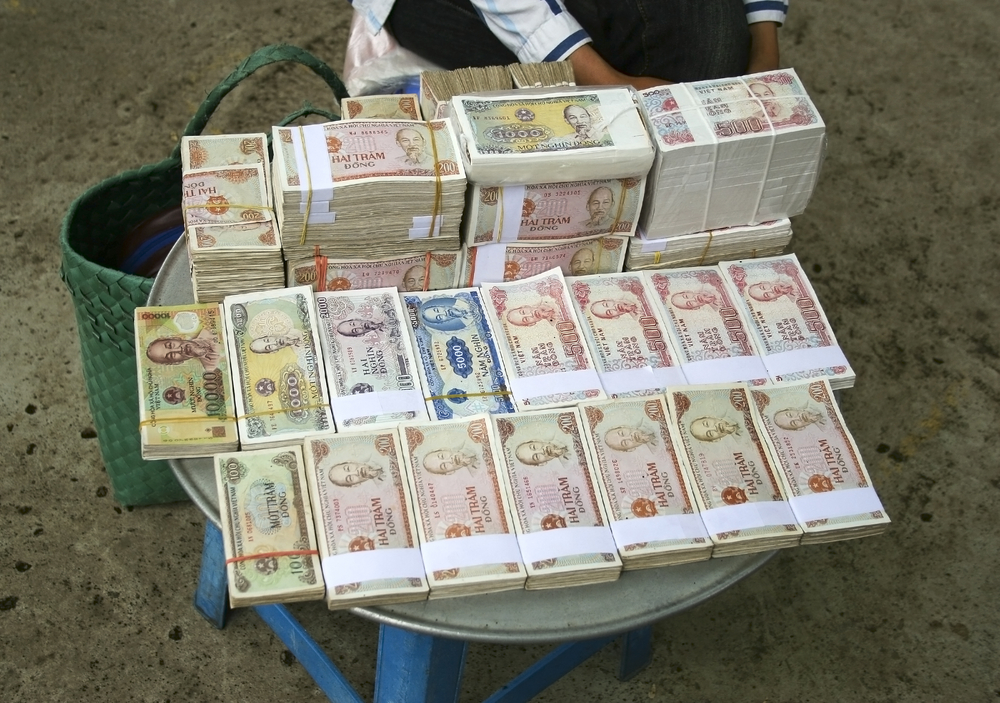Vietnam Hoping Function Follows Form

Please note that we are not authorised to provide any investment advice. The content on this page is for information purposes only.
In architecture, there is a dictum that ‘form follows function’. The architect decides a building’s use and then designs the building for those purposes. In Vietnam’s process of economic reforms, the reverse is often the case — ‘function follows form’. Structures are put in place and then it is hoped that the functionality will follow. This appears to be the case in reforms to the country’s banking sector.
In architecture, there is a dictum that ‘form follows function’. The architect decides a building’s use and then designs the building for those purposes. In Vietnam’s process of economic reforms, the reverse is often the case — ‘function follows form’. Structures are put in place and then it is hoped that the functionality will follow. This appears to be the case in reforms to the country’s banking sector.
Since March 2012 when the Vietnamese government announced their so-called ‘road map’ for bank re-structuring, the number of banks in the system has been reduced by 15 out of 37 domestic banks. This includes the mergers of nine ‘weak banks’. The Vietnam Asset Management Corporation (VAMC) was set up in July 2013 and, according to the State Bank of Vietnam (SBV), the ratio of non-performing loans (NPLs) to total banking assets has been reduced from 17.21 percent in September 2012 to 3.72 percent at the end of June 2015.
However, bank mergers solve only the immediate problem of insolvent banks. The long-term viability of the banking sector depends, as everywhere else in the world, on the profitability of its customers. In Vietnam’s case, these customers are predominantly the large conglomerates (the 13 so-called ‘economic corporations’) and other state-owned enterprises (SOEs).
Attempts to sell part (or all) of the large SOEs and conglomerates have not been particularly successful. In September 2014, the government failed to sell the majority of the shares in the initial public offering of its huge textiles conglomerate, Vinatex, despite the anticipated benefits of the Trans-Pacific Partnership to Vietnam’s textiles and garments sector. Efforts to sell 3.5 percent of Vietnam Airlines in November 2014 attracted no foreign interest and the shares were taken up by Vietnamese banks. As for the NPLs in the property sector, the latest government stimulus package to unfreeze the property market was deemed too little, too late.
Until there is real progress with the reform of SOEs in Vietnam, its banking sector will be dysfunctional in that it will not be able to perform the task of transferring valuable capital from savers to the most efficient investors.
The VAMC was set up in 2013 with the mandate to swap NPLs valued at cost from banks in exchange for ‘special bonds’ issued by the VAMC itself. The banks were permitted to use those bonds as collateral against borrowings from the SBV. They still ‘owned’ those NPLs though and had to take them back after five years. In other words, this scheme provided temporary liquidity to the banks and removed the NPLs from their balance sheets for a time. However, the bonds were not a method for recapitalising insolvent banks.
In March and August of 2015, the operation of the VAMC was expanded. Banks are now given 10 years to swap the ‘special bonds’ for their NPLs. That is, they are given a longer timeframe to make provisions for their NPLs. In addition to the existing scheme of ‘special bonds’, the VAMC is now able to swap NPLs valued at market (rather than at cost) for ordinary (not special) bonds. Under this additional function, banks are relieved of their NPLs and the VAMC takes on the credit risk of these NPLs valued at market.
However, it is not clear whether this additional function is actually operational as there is no real market for a significant portion of the NPLs. The market value (which could be zero) would have to be negotiated between the VAMC and the banks. Depending on the level of that negotiated price, more banks will become insolvent or the VAMC will need a great deal more funding to take on the credit risk — a problem for a government already concerned with the level of public debt.
The arrangement for ‘special bonds’ is not the way asset management companies are normally used by governments in other countries with distressed banking assets. Still, it seems to have bought some time for the authorities. It’s hoped that as economic growth continues to improve, the banks will be able gradually to work off their NPLs.
The rating agency, Moody’s, gave the Vietnamese banking system a ‘stable outlook’ and in November 2015, explained that this was made based on improved economic conditions for the country generally. However, it remains negative in terms of profitability and capitalisation of the banking sector.
Cleaning up the NPLs from the banking system and making it function as an effective vehicle for saving and investment is likely to be a long drawn-out process. This is particularly the case as the banking sector is intimately tied to the reform of the large SOEs and economic corporations. Some public funds will probably be required to re-capitalise the banks and this needs to be factored into Vietnam’s medium-term budget and debt projections.
A note of greater urgency needs to be injected into the process of reform. Foreign ownership of domestic banks should be included in the Vietnamese government’s decision to raise foreign ownership of companies generally from 49 percent to 60 percent, particularly given that there are already 100 percent foreign-owned banks operating in the country. The government and the Vietnamese public should not be lulled into thinking that the appearance of declining NPLs currently is the substance or the outcome of successful banking reform.
Don’t bank on Vietnam’s financial reform is republished with permission from East Asia Forum




